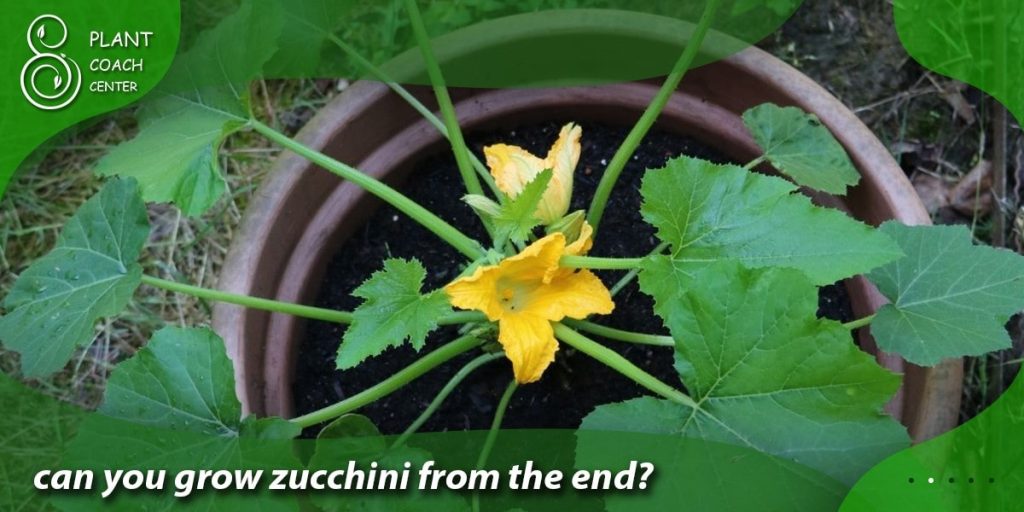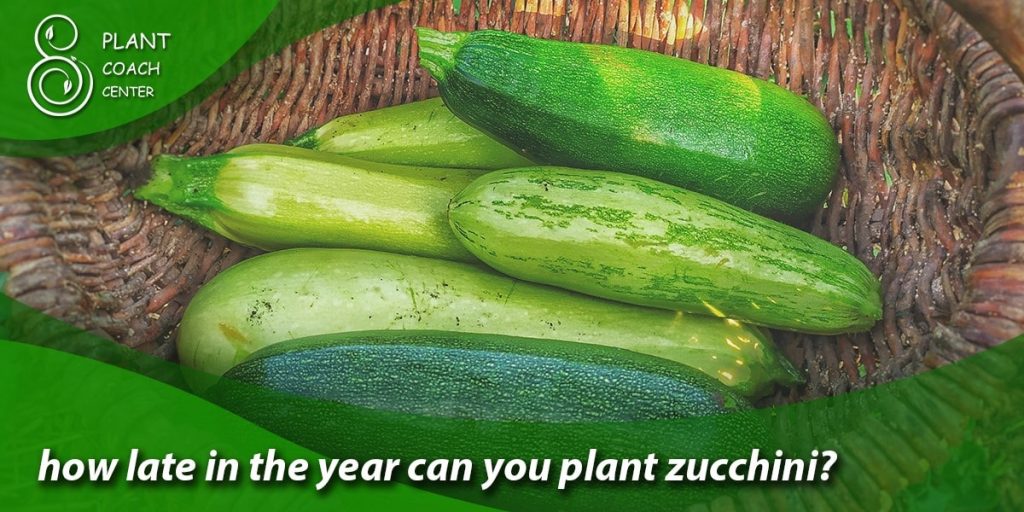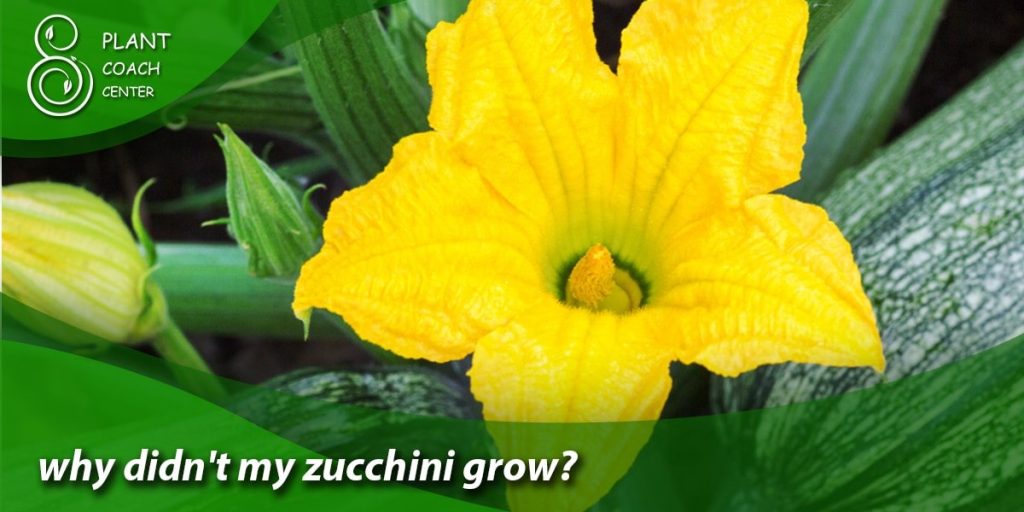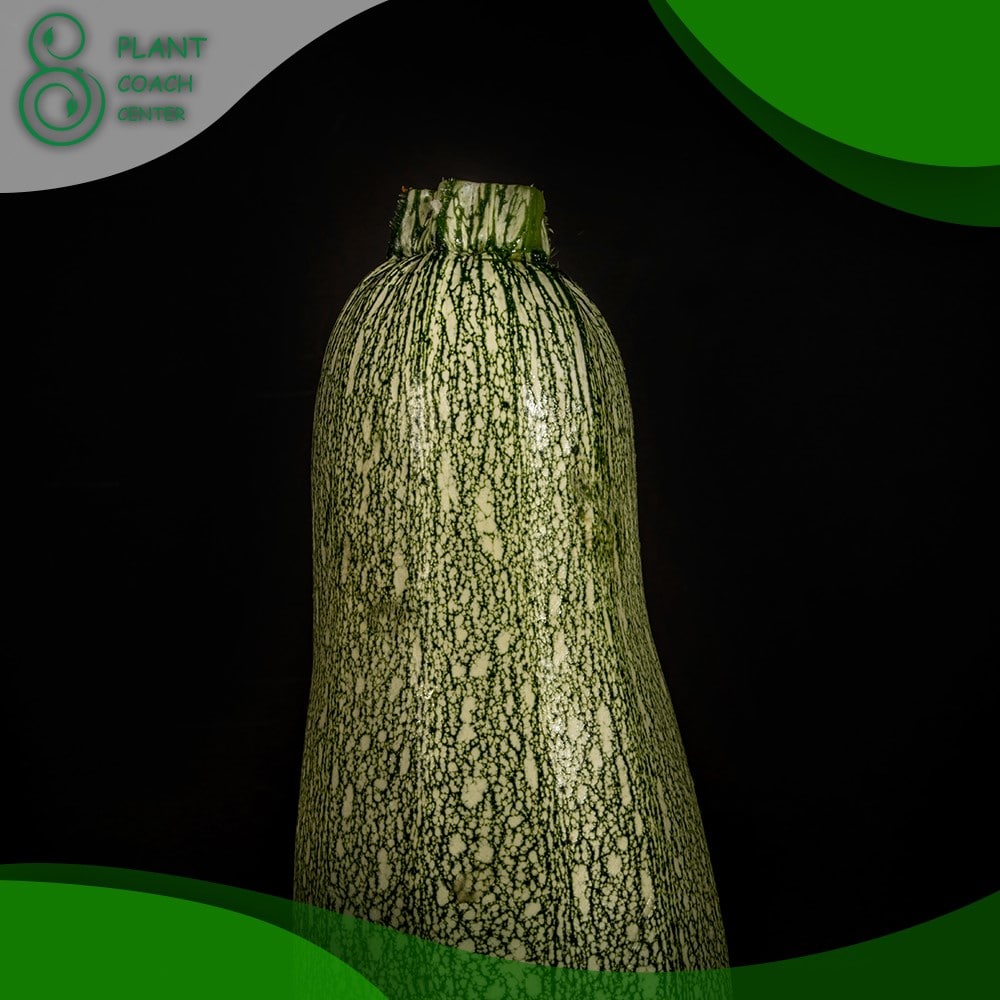When to Grow Zucchini?
Imagine plucking a fresh zucchini from your garden, its vibrant green skin glistening in the sunlight, ready to be transformed into delectable dishes that delight your taste buds. Achieving this culinary dream is not just about having a green thumb; it’s about understanding the art of timing in zucchini cultivation.
Zucchini, a versatile and prolific summer squash, has captured the hearts of gardeners and food enthusiasts alike. But when is the ideal time to grow zucchini to ensure a plentiful harvest and mouthwatering meals? In this gardening journey, we will embark on a seasonal adventure, exploring the nuances of Zucchini’s growth patterns, the influence of weather and climate, the choice between seeds and seedlings, and much more.
Whether you’re a seasoned gardener or a novice passionate about homegrown produce, this article will guide you through the intricate dance of time and Zucchini, helping you savor the fruits of your labor throughout the year.

Seasonal Zucchini Delights
Zucchini, often called summer squash, is a warm-weather vegetable that thrives under specific seasonal conditions. Understanding when to grow Zucchini is crucial for a fruitful and flavorful harvest. Let’s embark on a journey through the seasons and discover the delights that each one brings to zucchini cultivation:
Spring
As the weather begins to warm and frosty nights become a memory, spring is the perfect time to kickstart your zucchini garden. Wait until the soil temperature consistently reaches around 60°F (15°C). Plant zucchini seeds or seedlings after your region’s last expected frost date. The young zucchini plants will benefit from the mild spring temperatures and establish strong roots for a bountiful summer yield.
Summer
Summer is Zucchini’s prime time. With plenty of sunshine and warm temperatures, this season is when your zucchini plants will thrive and produce abundant fruit. Regular watering and fertilization are essential during summer to keep the plants hydrated and nourished. Be prepared to harvest zucchinis frequently, as they can overgrow, often reaching their peak flavor and tenderness when picked at around 6-8 inches (15-20 cm) in length.
Fall
While many vegetables fade as autumn approaches, Zucchini can thrive in the early fall. This season’s cooler temperatures can enhance the flavor of the fruit. Keep an eye on the weather forecast, as an unexpected frost can quickly spell the end for your zucchini plants. Consider using row covers or other protective measures to extend your harvest into the fall months.
Winter
Unfortunately, winter is not a season for growing zucchini in most regions, as it requires warm soil and temperatures above freezing. However, you can preserve your zucchini harvest by freezing or canning it to enjoy its delicious flavor in soups, stews, and other dishes throughout the winter.
Weather Watch: Zucchini’s Ideal Climate
Zucchini, like any other plant, thrives under specific weather conditions. Understanding the ideal climate for zucchini cultivation is paramount to a successful and fruitful harvest. Here, we delve into the weather factors that can make or break your zucchini-growing experience:
Temperature
Zucchini plants are warm-season vegetables that thrive in temperatures between 70°F to 95°F (21°C to 35°C). They are susceptible to frost and cold weather, so it’s crucial to plant them after the last frost date in your region. Additionally, zucchini plants can become stressed when exposed to prolonged periods of extreme heat. Adequate shading or mulching can help protect them during scorching summer days.
Sunlight
Zucchinis are sun lovers. They require at least 6-8 hours of direct sunlight daily to grow and produce an abundant harvest. Ensure that your planting site receives ample sunshine throughout the day, and consider trimming nearby plants or structures that may cast shadows on your zucchini patch.
Rainfall and Watering
Zucchini plants appreciate consistent moisture but prefer to avoid soggy conditions. Adequate drainage is essential to prevent waterlogged soil, which can lead to root rot. While they can tolerate brief dry spells, regular and even watering is crucial, especially during the flowering and fruiting stages. Aim to water at the base of the plant to keep the foliage dry and reduce the risk of fungal diseases.
Humidity
Zucchinis prefer moderate humidity levels. High humidity can lead to fungal diseases, such as powdery mildew, which can harm plants. Adequate spacing between zucchini plants for air circulation and the use of disease-resistant varieties can help mitigate humidity-related issues.
Wind
Zucchini plants have relatively shallow roots and can be susceptible to wind damage. Plant them in a location that provides some protection from strong winds, or consider using windbreaks to shield your plants from gusty conditions.

Starting from Seeds or Seedlings
When considering when to grow zucchini, one of the first decisions is whether to start from seeds or opt for seedlings. Both methods have advantages and considerations, and the choice largely depends on your gardening goals, experience, and the time of year you plan to begin your zucchini journey.
Starting from Seeds
Pros:
Cost-Effective: Seeds are generally more budget-friendly than purchasing seedlings or young plants.
Variety: Growing from seeds offers a broader variety of zucchini cultivars, allowing you to explore unique flavors, sizes, and colors.
Timing Flexibility: Starting from seeds gives you greater control over the timing of your zucchini planting. You can sow seeds indoors before the last frost and transplant them outdoors when conditions are ideal.
Educational Experience: Growing Zucchini from seeds can be a rewarding learning experience, especially for gardening enthusiasts looking to expand their skills.
Cons:
Longer Wait Time: Growing from seeds typically requires a longer lead time before you can enjoy your first zucchinis, as you need to wait for seeds to germinate and seedlings to establish.
More Maintenance: Seedlings require careful attention to lighting, humidity, and temperature during their early stages of growth, which can be challenging for beginners.
Starting from Seedlings
Pros:
Quick Start: Seedlings are ready to be planted in your garden immediately, allowing a faster start to the growing season.
Reduced Risk: By choosing seedlings, you avoid some challenges associated with germinating seeds and caring for delicate seedlings indoors.
Predictable Results: Since you’re working with established plants, you have a clearer idea of what to expect regarding size and fruit production.
Cons:
Limited Variety: Seedlings may have a more limited variety selection than seeds, as garden centers often carry only a few popular zucchini cultivars.
Cost: Purchasing seedlings can be more expensive than buying seeds, especially if you need many plants.

Zucchini Varieties for Different Seasons
Zucchinis come in various shapes, sizes, and colors, making them a versatile addition to any garden. Depending on the season and climate, you can choose from a wide range of zucchini varieties to suit your preferences and growing conditions. Here’s a guide to some zucchini varieties that shine in different seasons:
Early Season Varieties
Raven: If you’re eager to start your zucchini harvest early in the season, consider planting Raven zucchinis. These dark-green beauties mature quickly and are known for their excellent flavor.
Golden Dawn: For a sunny burst of color in your early summer garden, opt for Golden Dawn zucchinis. These vibrant yellow zucchini are tender and sweet.
Mid-Season Varieties
Black Beauty: Black Beauty zucchinis are a classic choice for mid-season gardening. They produce dark green fruits that are tender and perfect for grilling, sautéing, or baking.
Costata Romanesco: If you’re looking for a zucchini with a twist, try Costata Romanesco. Its ribbed, light-green skin adds texture and visual appeal to your dishes.
Late Season Varieties
Tromboncino: Late-season gardening enthusiasts may want to grow Tromboncino zucchinis. These unique, elongated zucchinis are often compared to summer squash and have a mild, sweet flavor.
Yellow Crookneck: Yellow Crookneck zucchinis can brighten your garden late in the season. Their distinctive curved shape and rich flavor make them a delightful addition to late summer and early fall dishes.
Specialty Varieties
Eight Ball: Consider Eight Ball zucchini for a playful twist on Zucchini. These small, round zucchinis are perfect for stuffing and grilling and add a whimsy to your garden.
Zephyr: Zephyr zucchinis are known for their striking appearance, bright yellow tips, and pale green body. Their sweet flavor and unique look make them a favorite for gardeners who want something a bit different.
Zucchini Succession Planting
With its prolific nature, Zucchini is a perfect candidate for succession planting. This technique involves staggering your zucchini plantings at different times throughout the growing season to ensure a continuous harvest. Succession planting maximizes your zucchini yield and helps you make the most of your garden space. Here’s how to implement this strategy effectively:
Planning Your Succession Planting
You’ll need to plan your planting schedule to get started with zucchini succession planting. Consider the length of your growing season, the average time it takes for zucchini plants to mature (usually around 45-60 days from planting), and your family’s consumption habits. Ideally, you want to plant new zucchini seeds or seedlings every 2-3 weeks throughout the growing season to ensure a steady supply.
Preparing Your Garden Beds
Prepare your garden beds by amending the soil with organic matter, ensuring it’s well-draining and nutrient-rich. Create mounds or raised rows for planting, which helps with drainage and provides good air circulation around the plants.
Starting Early in Spring
Begin your zucchini succession planting in early spring, once the soil has warmed up and all danger of frost has passed. Plant your first batch of zucchini seeds or seedlings, ensuring they are spaced according to the variety’s recommended guidelines.
Continuing Through the Season
As your first batch of zucchini plants begins to produce, start your second round of planting about 2-3 weeks later. Continue this pattern throughout the growing season. Remember to label your plants or rows to keep track of their planting dates and varieties.
Managing Growth
Monitor your zucchini plants closely as they grow. Regularly inspect for pests, diseases, and signs of overproduction, such as overcrowded fruits. Proper pruning and thinning can help manage plant growth and improve air circulation, reducing the risk of powdery mildew and other common zucchini issues.
Adjusting for Fall Harvest
Consider planting a final round of zucchini seeds or seedlings in late summer. These will extend your harvest into the fall months, taking advantage of the cooler weather to produce flavorful Zucchini.
Preserving the Harvest
With a continuous zucchini supply, you may be abundant in this versatile vegetable. Preserve your harvest by freezing, canning, or pickling zucchini to enjoy its goodness year-round.

Companion Planting for Zucchini
Companion planting is a gardening technique where specific plants are grown near each other to enhance growth, deter pests, and improve overall garden health. Regarding Zucchini, companion planting can be a valuable strategy to promote a thriving, pest-resistant crop. Here are some companion plants that work well alongside Zucchini:
Nasturtiums
Nasturtiums are excellent companions for zucchini because they help deter common zucchini pests like aphids, squash bugs, and cucumber beetles. Their vibrant flowers also attract beneficial insects like ladybugs and predatory wasps, which feed on garden pests.
Marigolds
Marigolds emit a strong odor that repels nematodes and many other garden pests. Marigolds around your Zucchini can help protect the plants from soil-borne diseases and harmful insects.
Radishes
Radishes serve a dual purpose in companion planting. They deter squash vine borers with their pungent scent, and their quick growth can provide shade to the zucchini plants’ root zones, helping to keep the soil cool and moist during hot summer months.
Beans
Bush beans or pole beans can be great companions for zucchini. They help improve soil fertility by fixing nitrogen in the soil, which benefits Zucchini’s nutrient uptake. Additionally, their vertical growth can shade zucchini leaves, reducing the risk of sunscald.
Herbs like Basil and Dill
When planted near Zucchini, herbs like basil and dill make delicious additions to your culinary creations and can help repel pests such as aphids and spider mites. Plus, they enhance the flavor of your zucchini dishes.
Borage
Borage is known to deter hornworms, which can be problematic for zucchini and other squash family members. Its attractive blue flowers also attract pollinators, benefiting the zucchini fruit set.
Corn
Planting zucchini near corn can provide shade and wind protection to the plants. However, be cautious with spacing to ensure the zucchini plants receive sufficient sunlight.

Overcoming Seasonal Challenges
Growing Zucchini can be a rewarding experience, but it’s not without its seasonal challenges. Different times of the year present unique obstacles that gardeners must overcome to ensure a successful zucchini harvest. Here are some strategies for conquering these seasonal hurdles:
Early Season Challenges (Spring)
Frost Protection: Late frosts can damage or kill young zucchini plants in spring. To safeguard your crop, use frost blankets or cloths to cover the plants overnight, and choose cold-tolerant zucchini varieties.
Slow Growth: Cooler spring temperatures can slow down zucchini growth. Consider using row covers to create a warmer microclimate, or start your zucchini indoors and transplant them when the weather warms up.
Mid-Season Challenges (Summer)
Heat Stress: High temperatures during the summer can stress zucchini plants and reduce fruit production. Provide ample water and mulch around the base of the plants to retain soil moisture and keep the roots cool.
Pest Infestations: Common garden pests like aphids, cucumber beetles, and squash bugs are most active during the summer. Regularly inspect your plants for signs of infestations and use organic pest control methods, such as neem oil or companion planting.
Late Season Challenges (Fall)
Frost Threat: As the weather cools in late summer and fall, the risk of frost increases. Keep an eye on the weather forecast and be prepared to cover your zucchini plants if frost is expected. Consider planting cold-hardy zucchini varieties for a more extended fall harvest.
Powdery Mildew: Fall is a prime time for powdery mildew to strike zucchini plants due to cooler nights and high humidity. Use preventive measures like proper spacing, good air circulation, and disease-resistant varieties.
Overcoming Challenges Year-Round
Crop Rotation: Regardless of the season, practicing crop rotation can help prevent the buildup of soil-borne diseases and pests. Avoid planting zucchinis and other squash family members in the same spot year after year.
Regular Maintenance: Consistent care throughout the growing season is essential. This includes proper watering, fertilizing, and pruning to keep plants healthy and disease-free.
Adaptability: Be prepared to adapt your gardening strategies based on the specific challenges each season poses. Gardening is dynamic, and your approach may need to evolve as the weather changes.
Conclusion
As we’ve explored the art of timing and techniques for growing zucchini throughout the seasons, it’s evident that this versatile vegetable can grace our plates year-round with some thoughtful planning and care. From the excitement of early spring planting to the challenges of summer’s heat and the rewards of a fall harvest, Zucchini’s journey in our gardens is delightful
Whether you’re a seasoned gardener or just starting out, the information provided here on PlantCouchCenter.com empowers you to maximize your zucchini yields, overcome seasonal obstacles, and enjoy the abundant rewards of your gardening efforts. With the proper knowledge and dedication, you can ensure a constant supply of this delicious summer squash for your culinary creations, connecting you more closely with nature and the joys of homegrown produce. Happy gardening, and may your Zucchini thrive in every season!
When is the best time to plant Zucchini?
Plant zucchini after the last frost in spring.
Can I grow Zucchini in the winter?
No, Zucchini requires warm temperatures and is typically grown in spring, summer, and fall.
What varieties are suitable for fall zucchini planting?
Consider late-season varieties like Tromboncino and Yellow Crookneck for a fall zucchini harvest.







